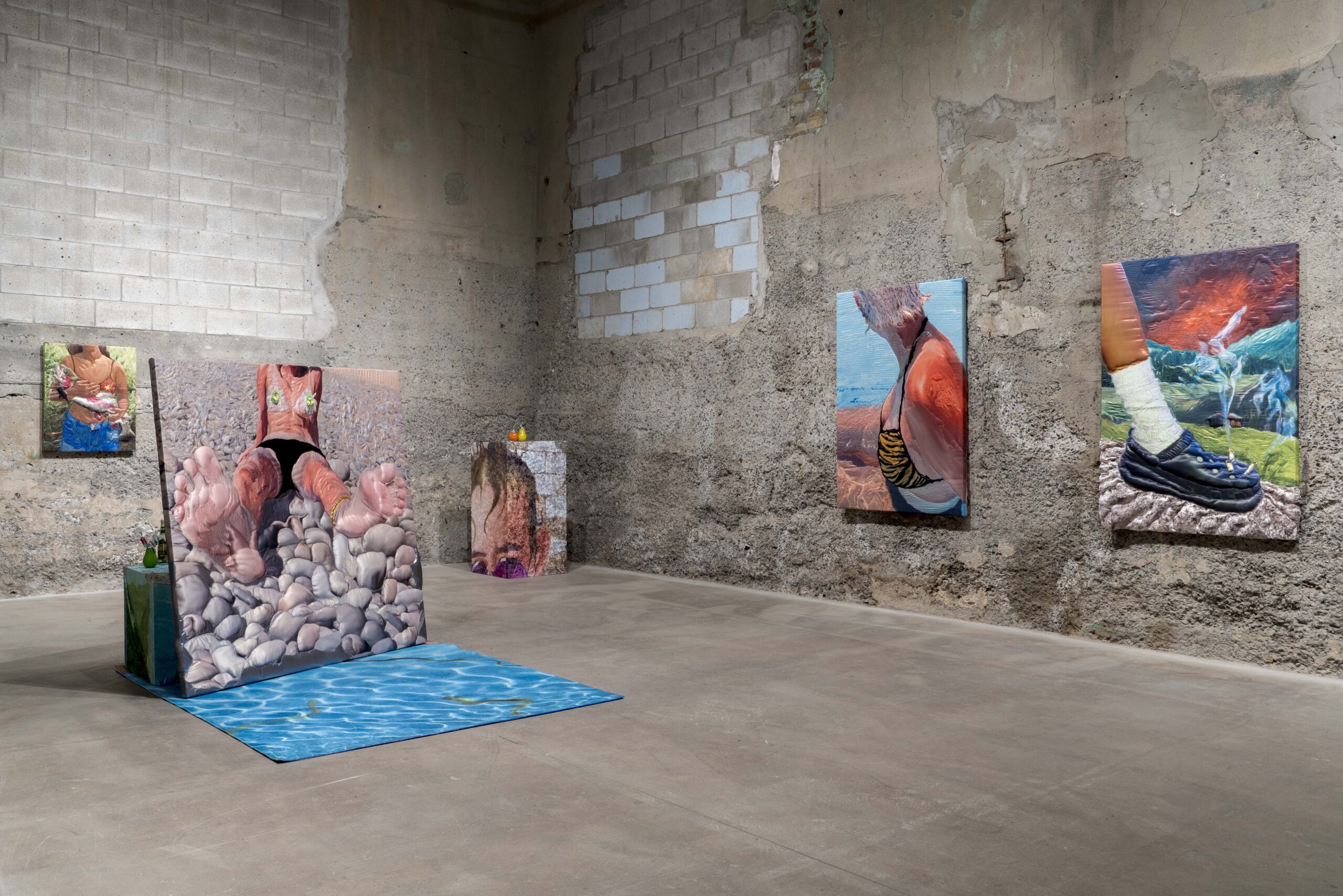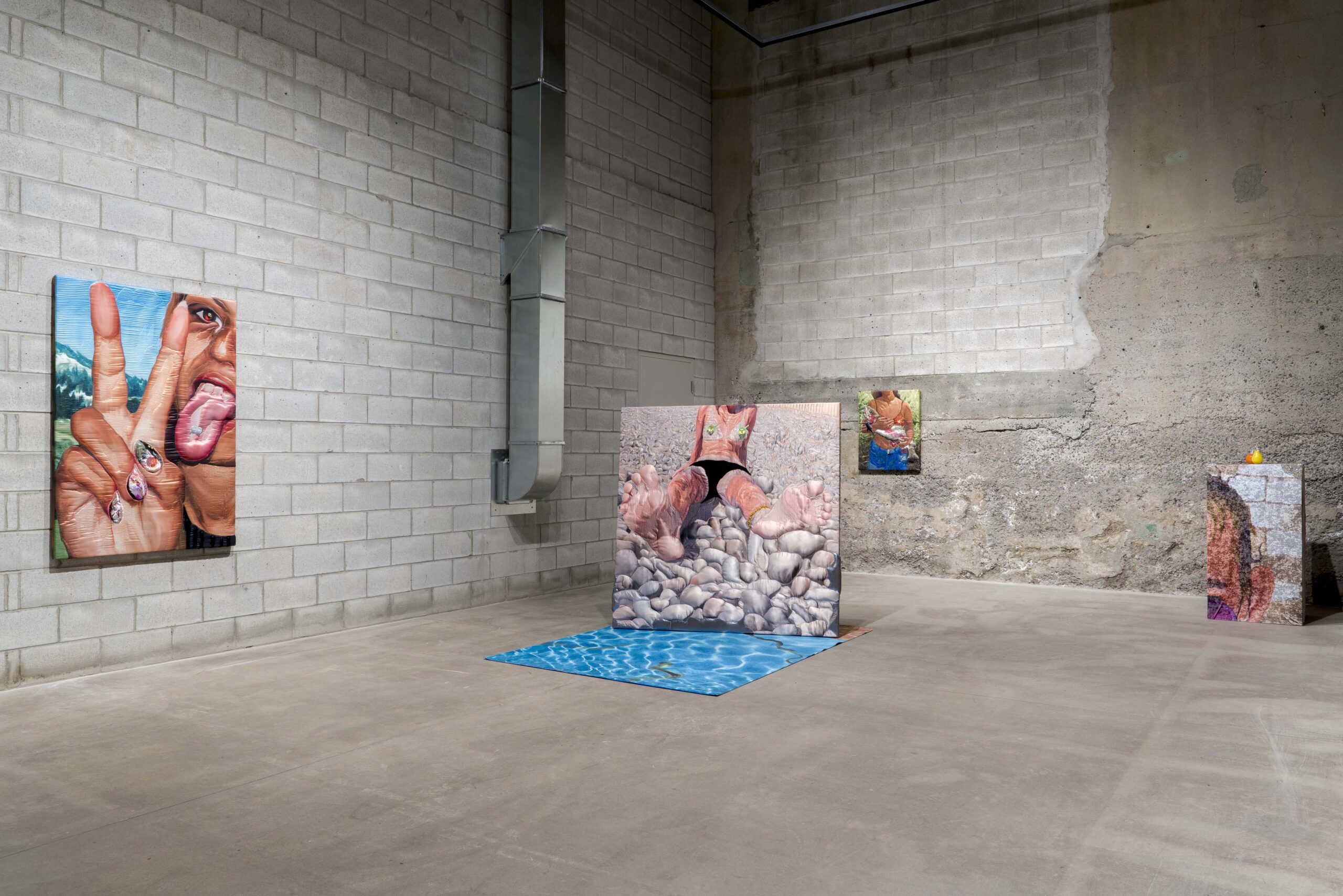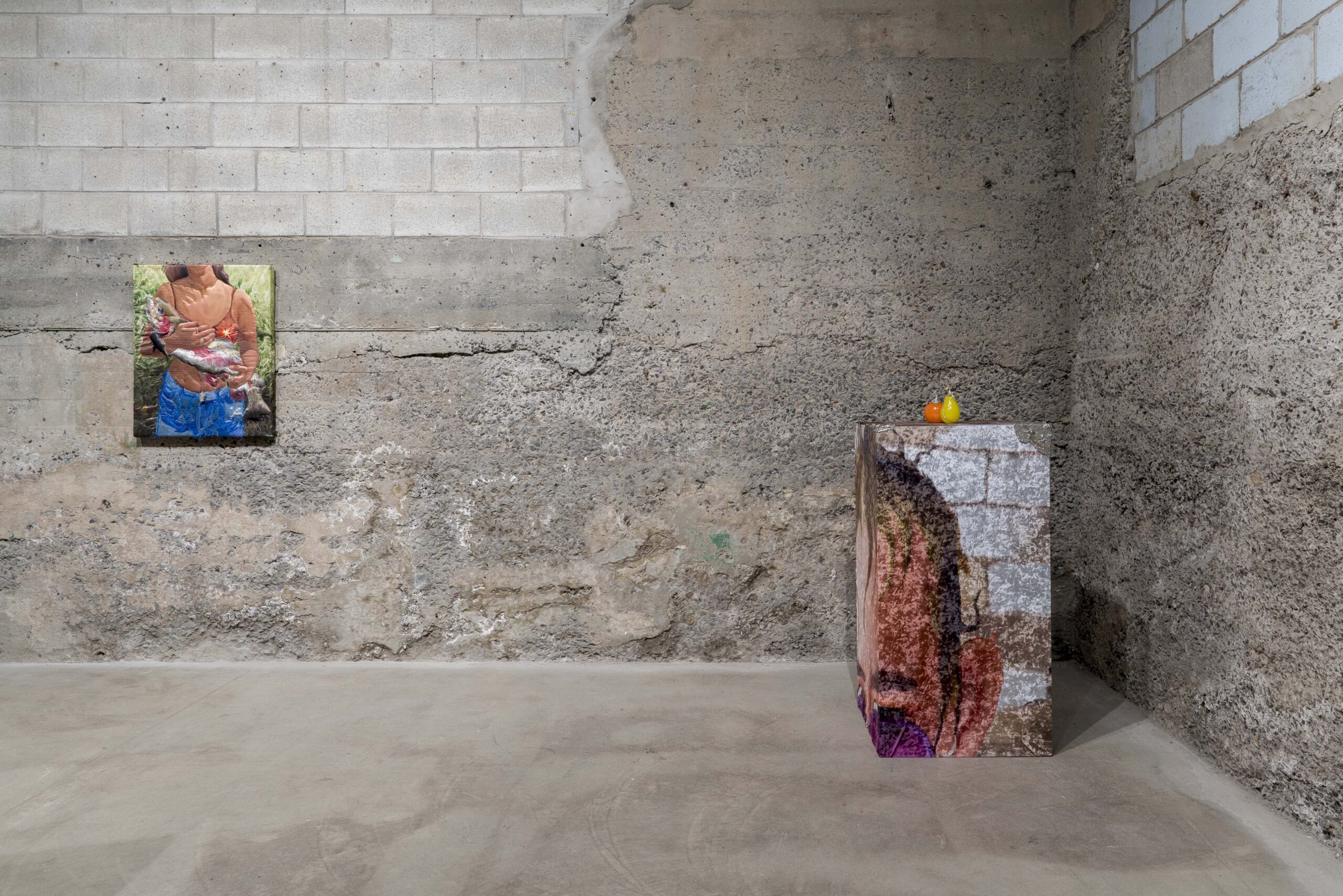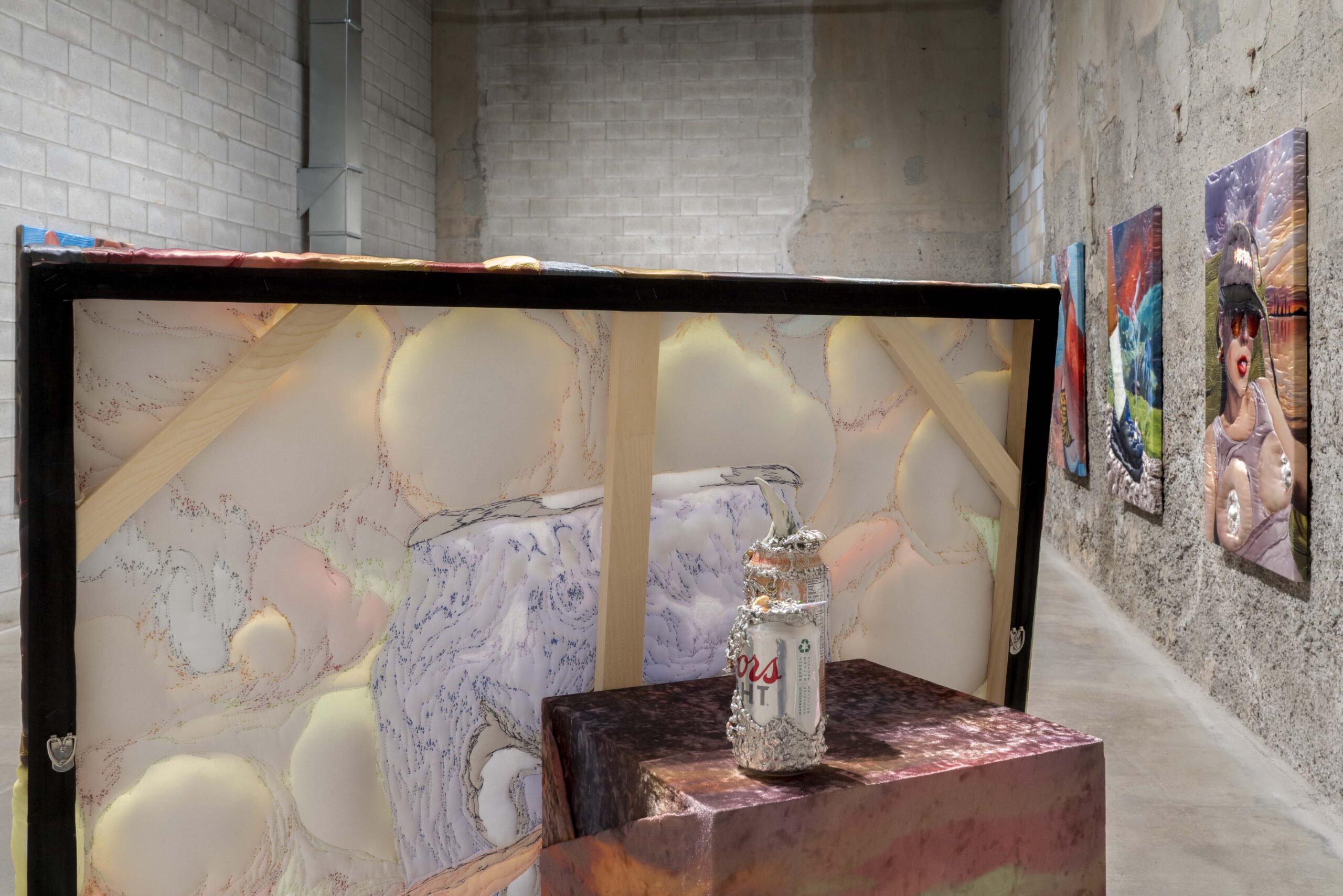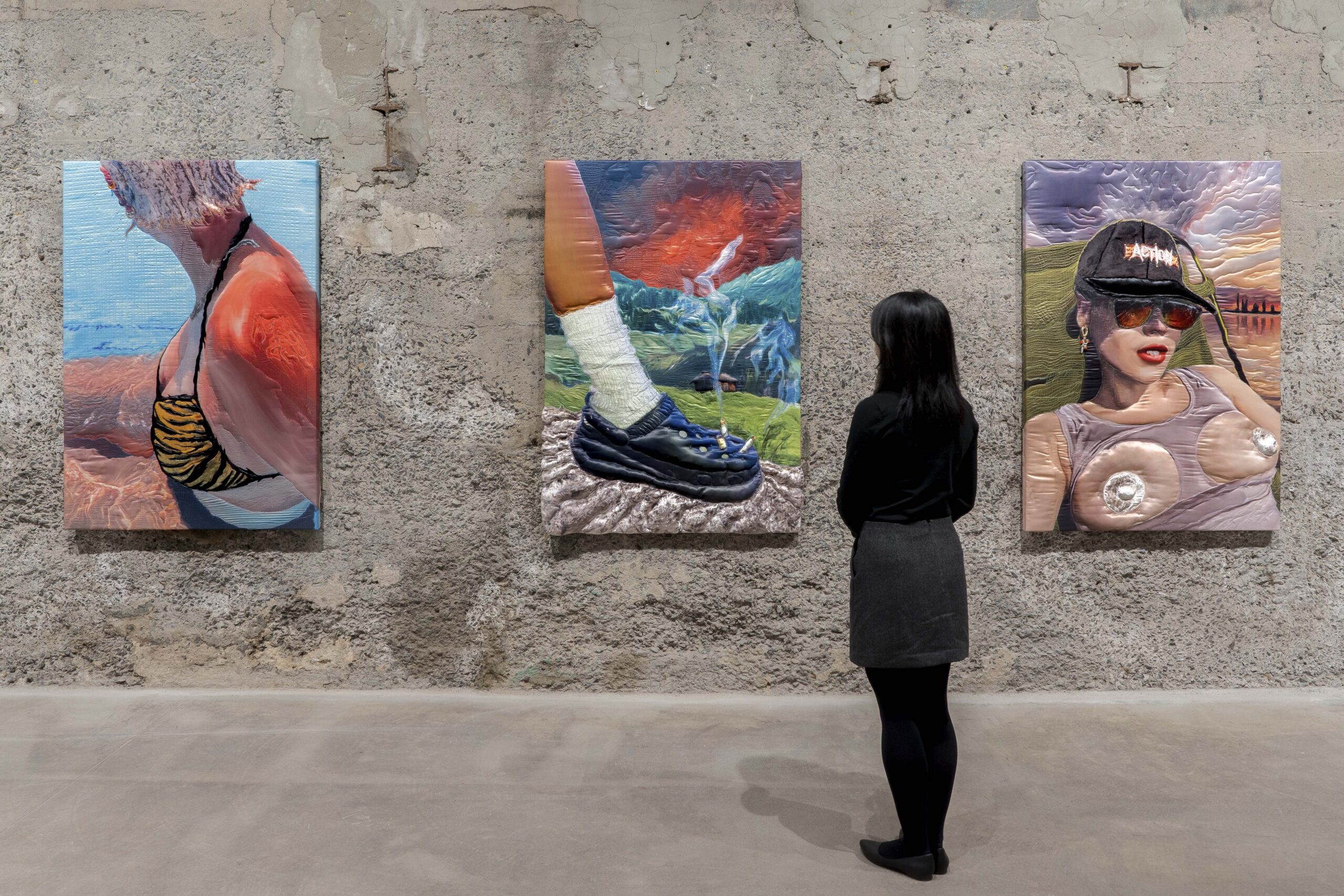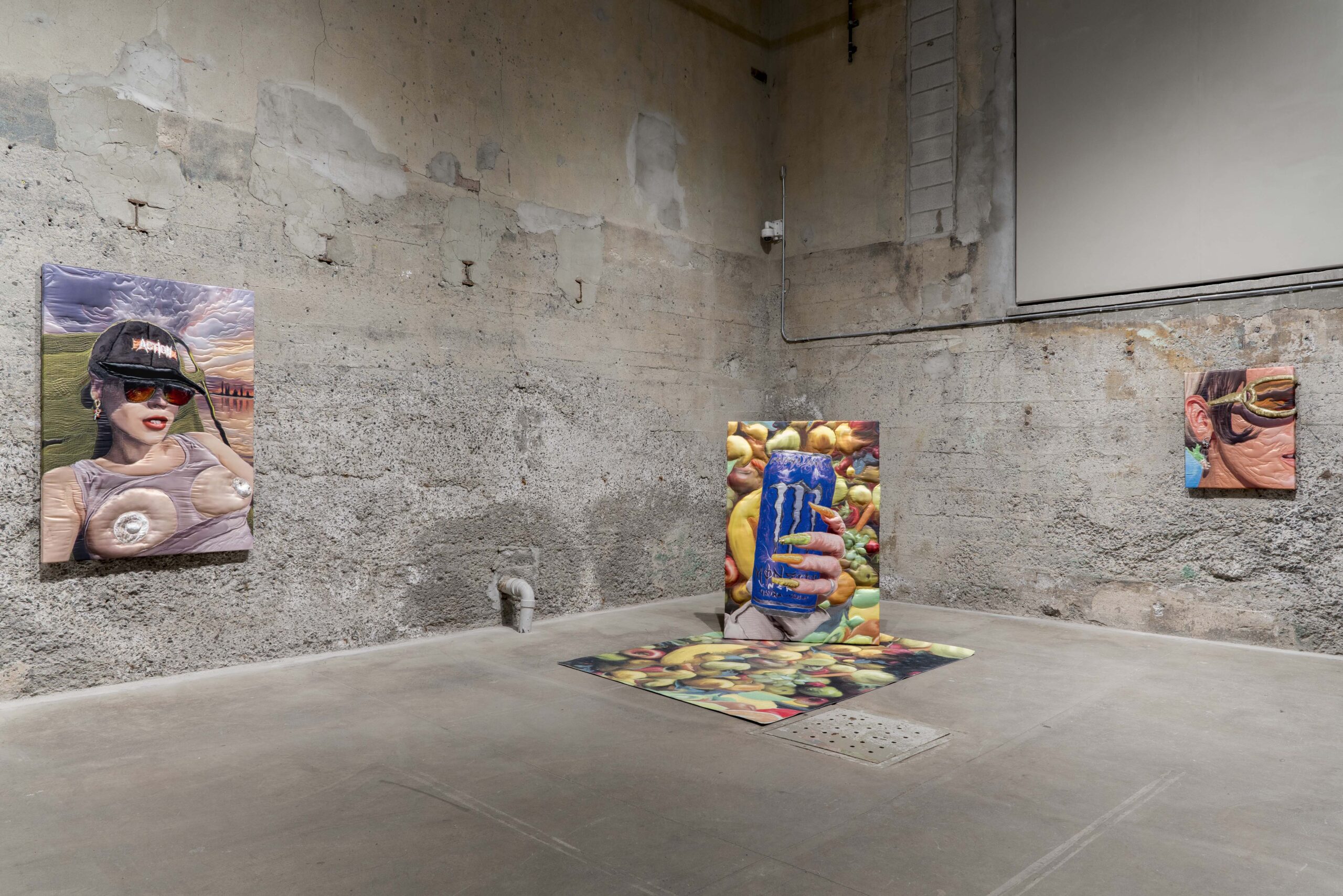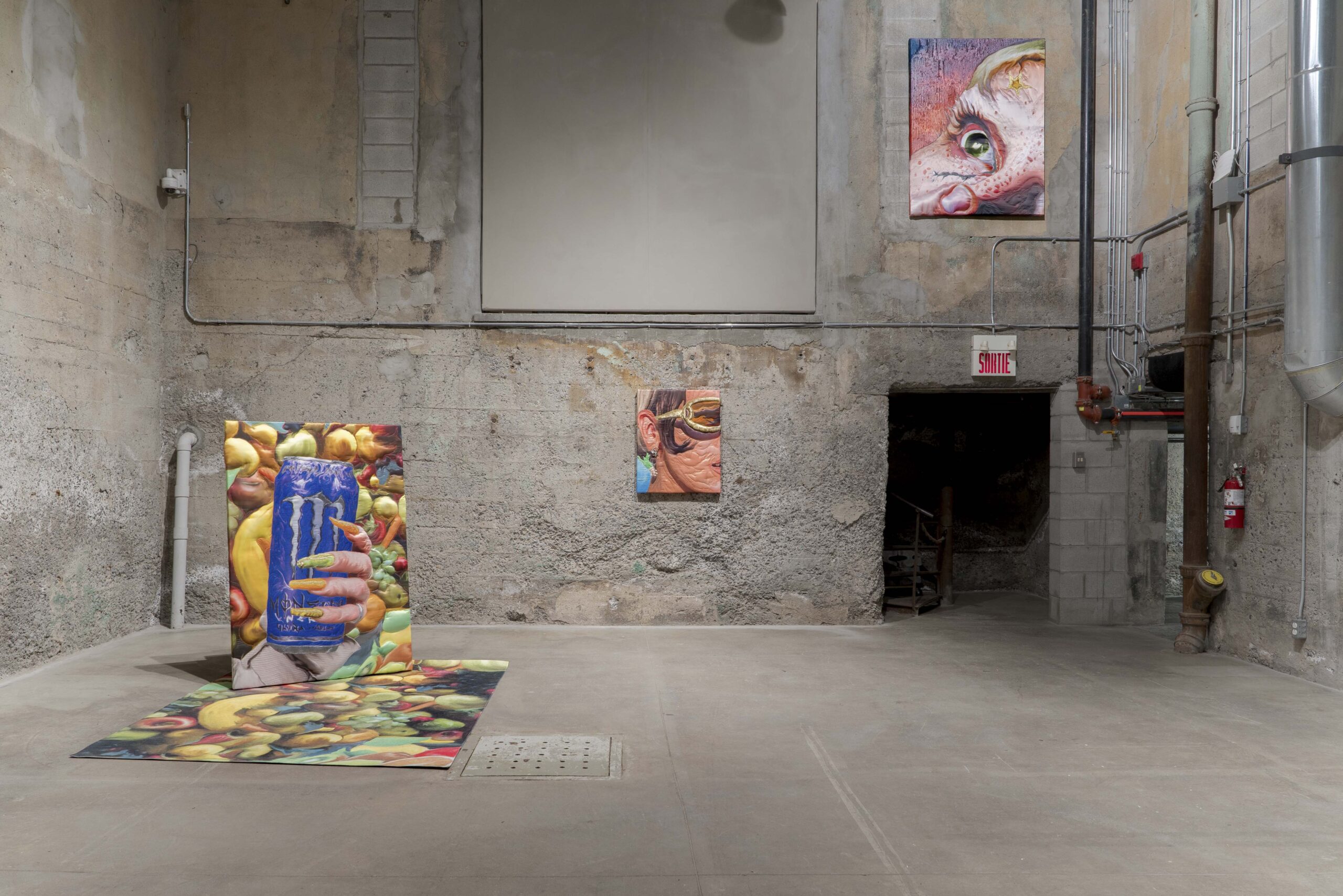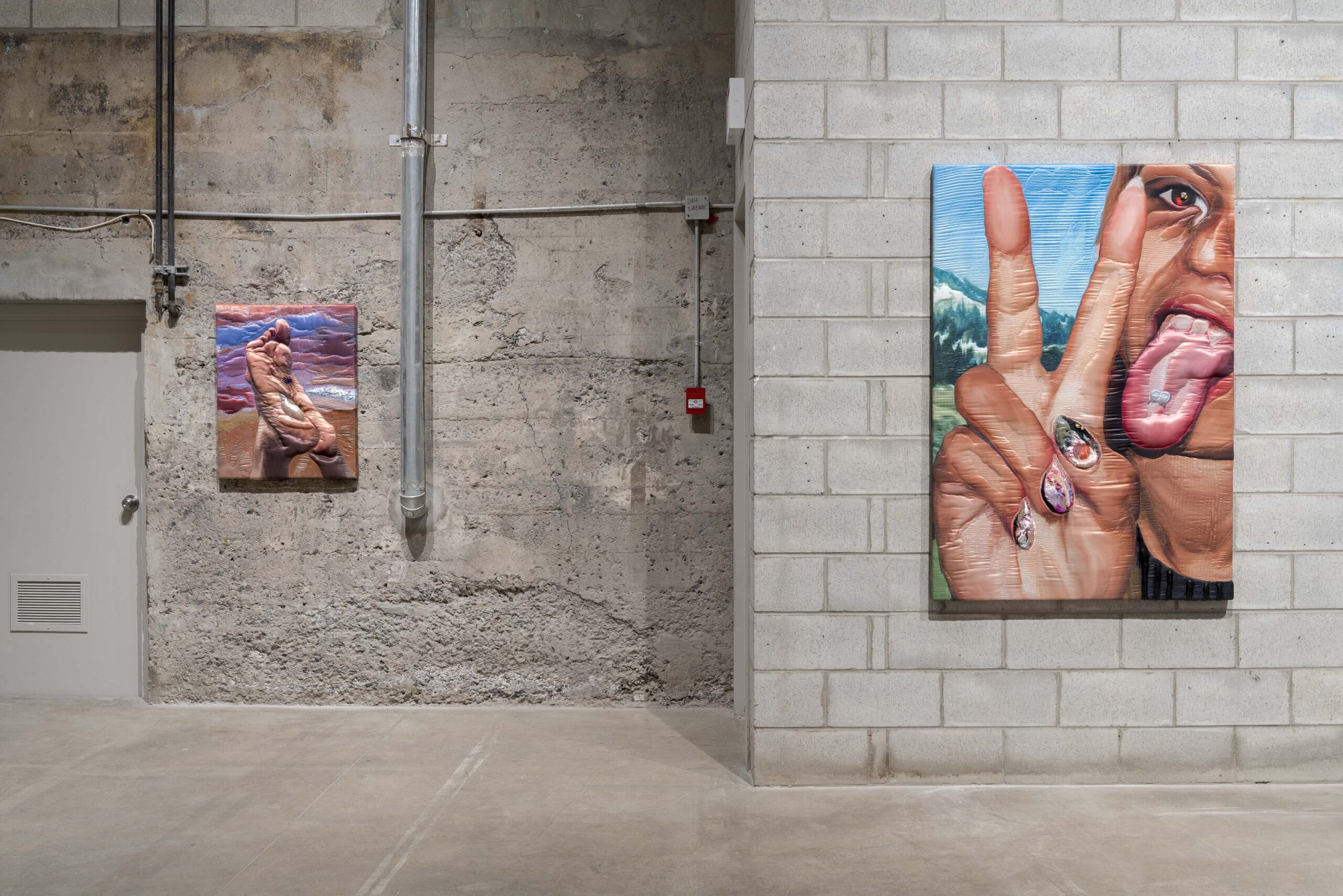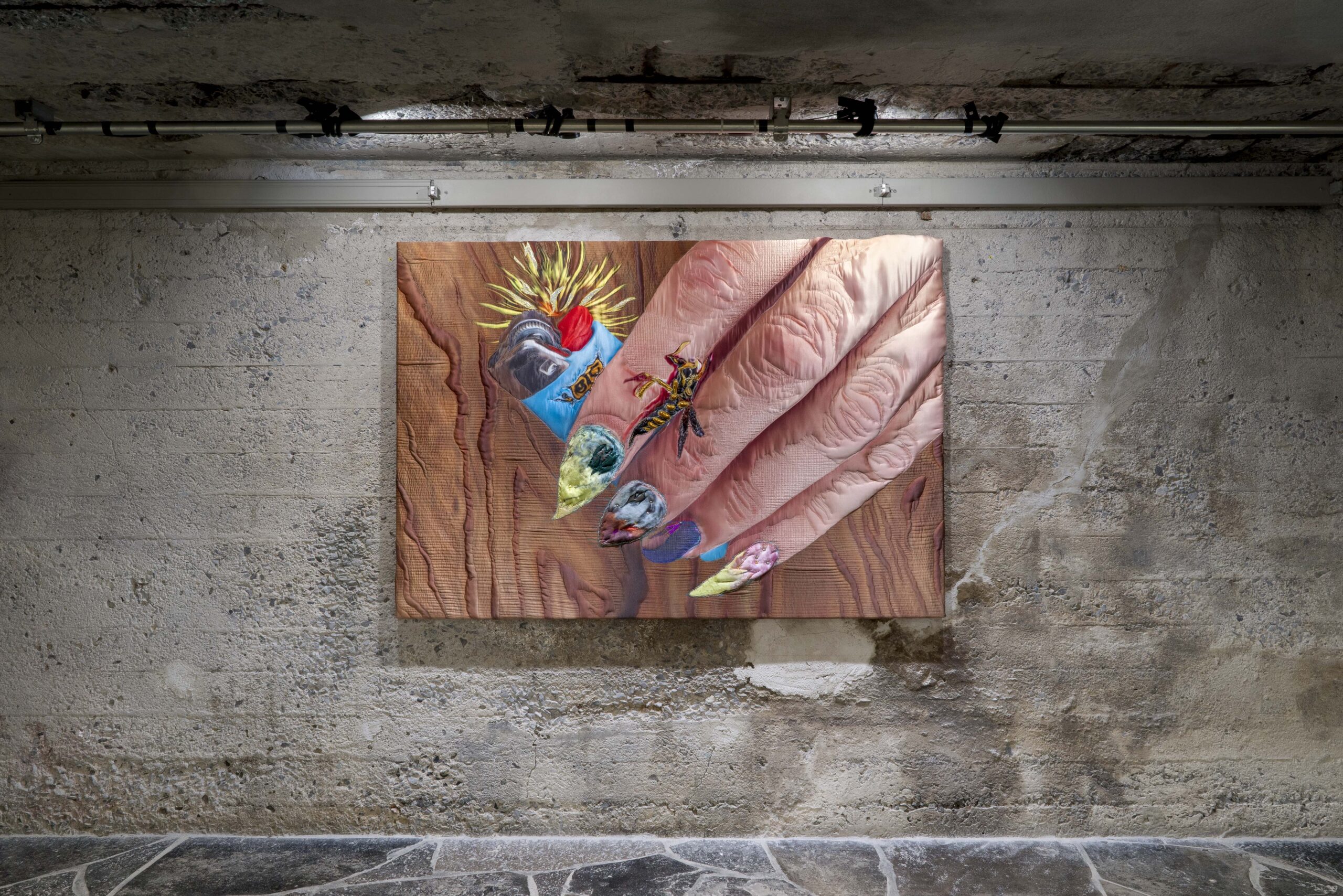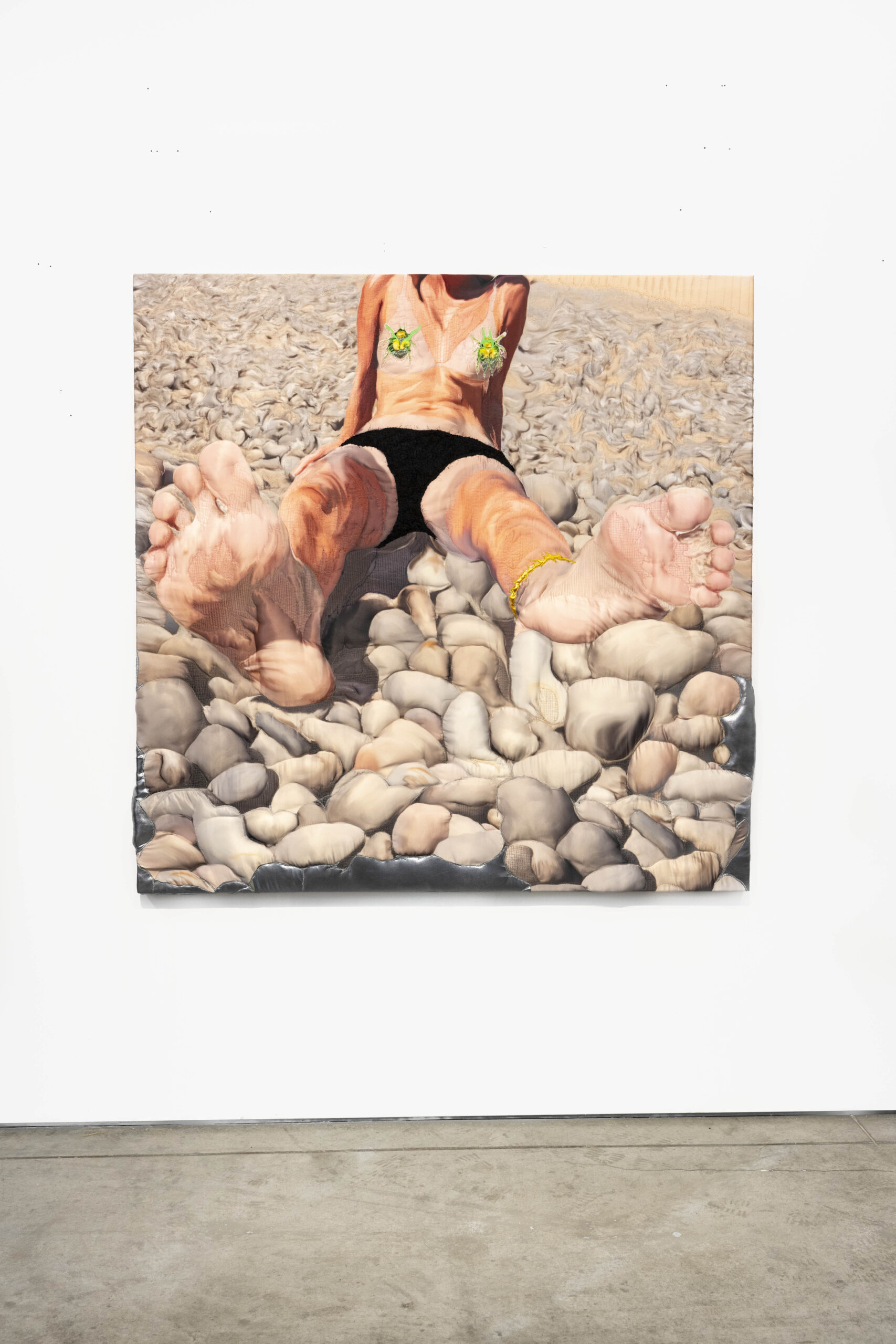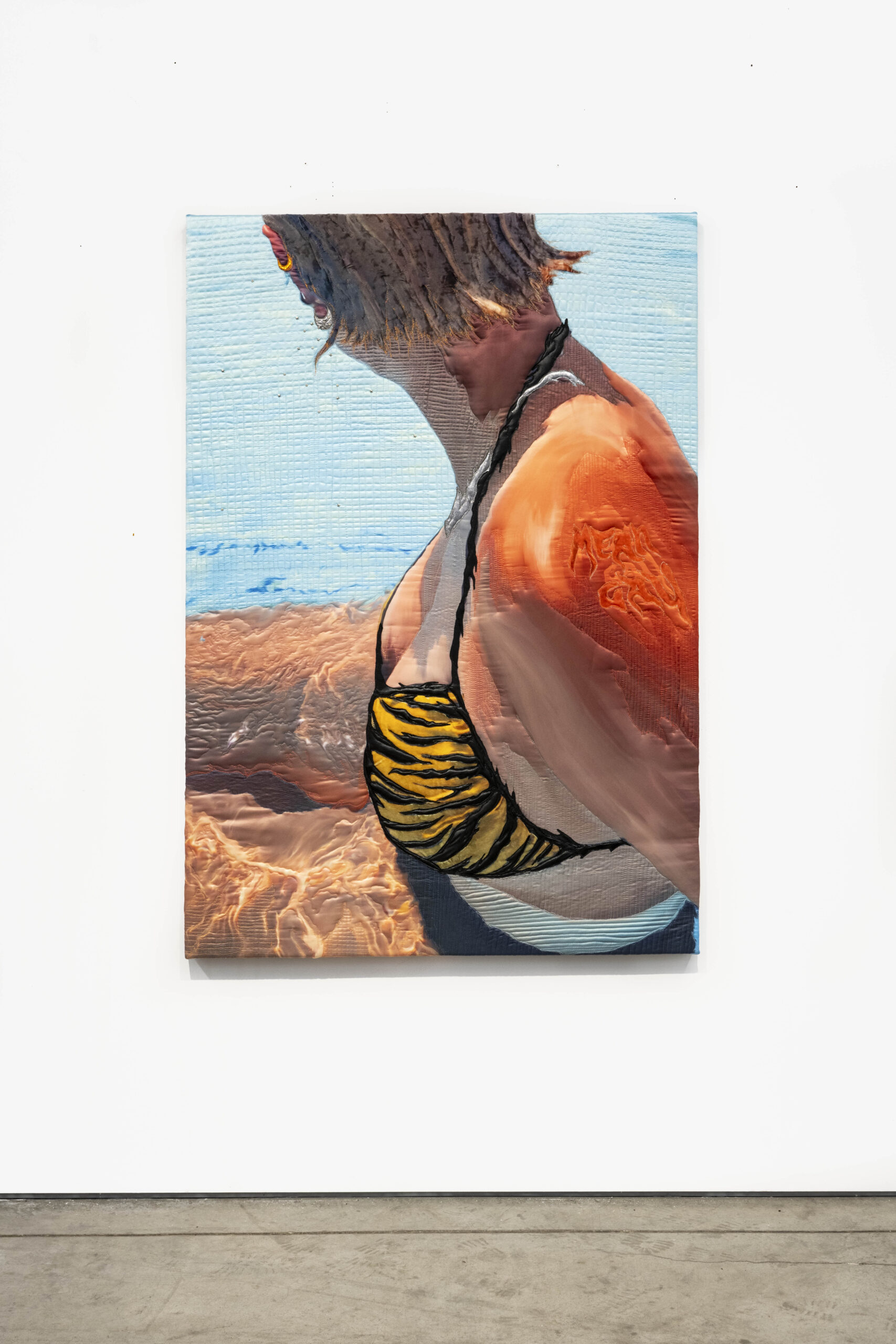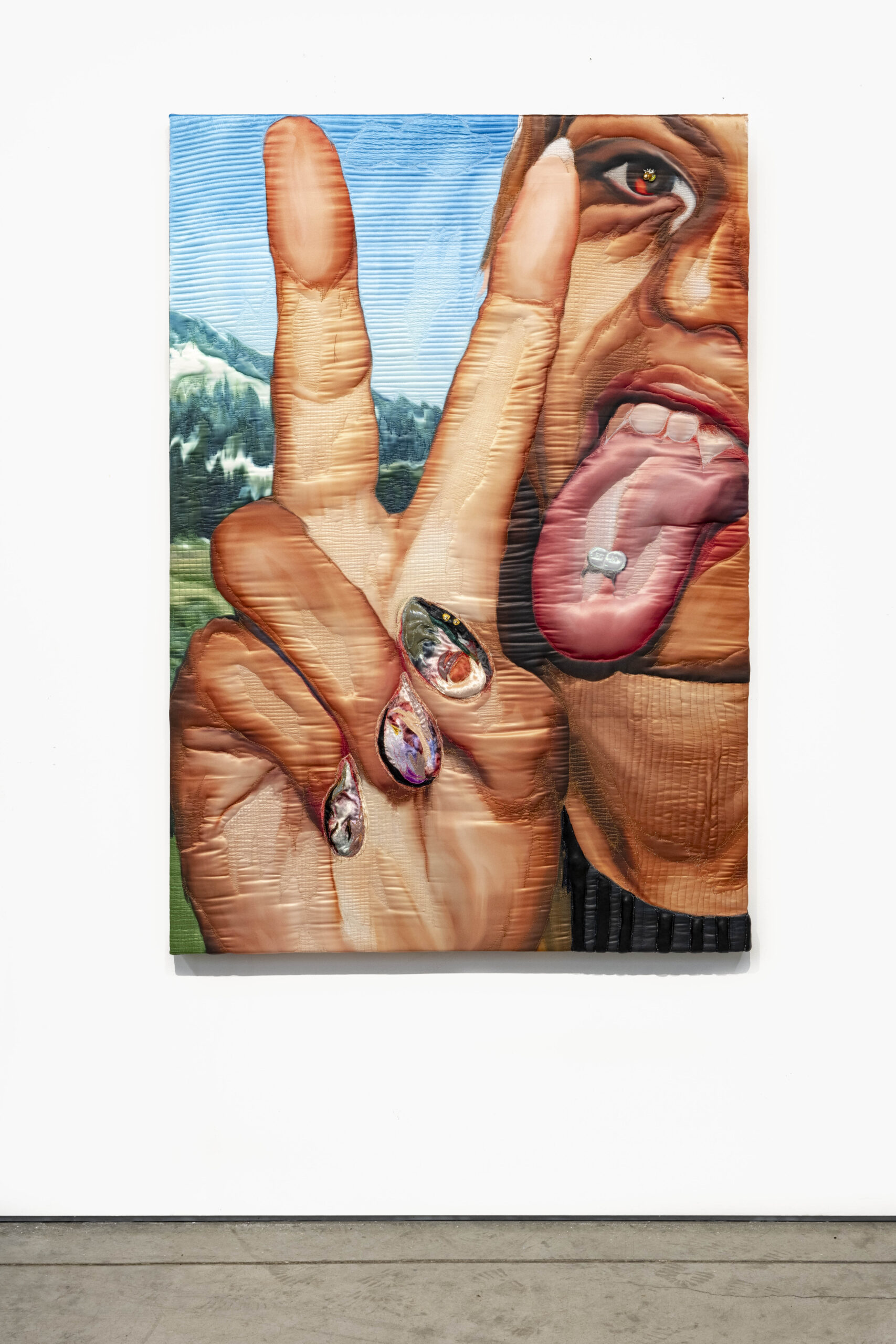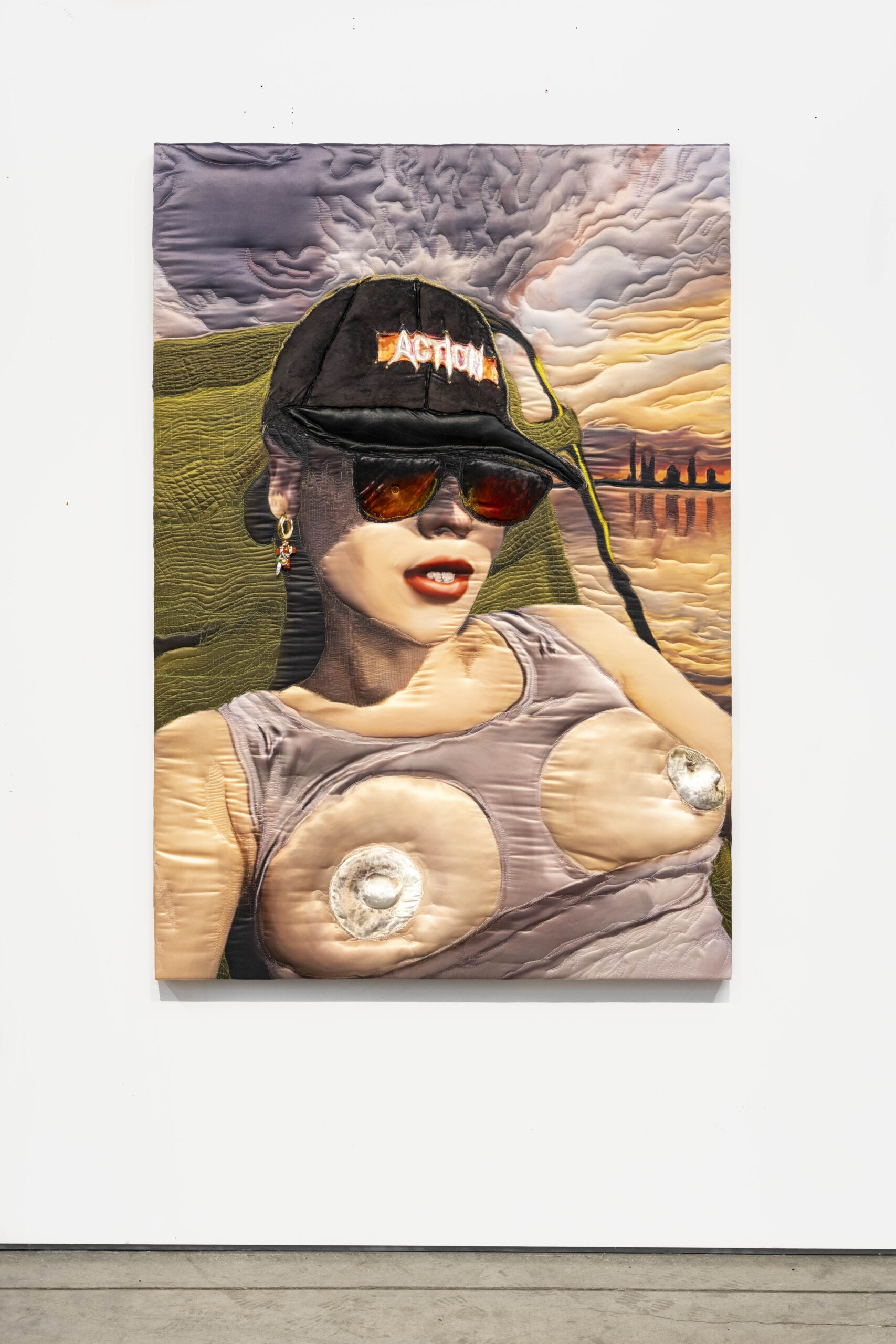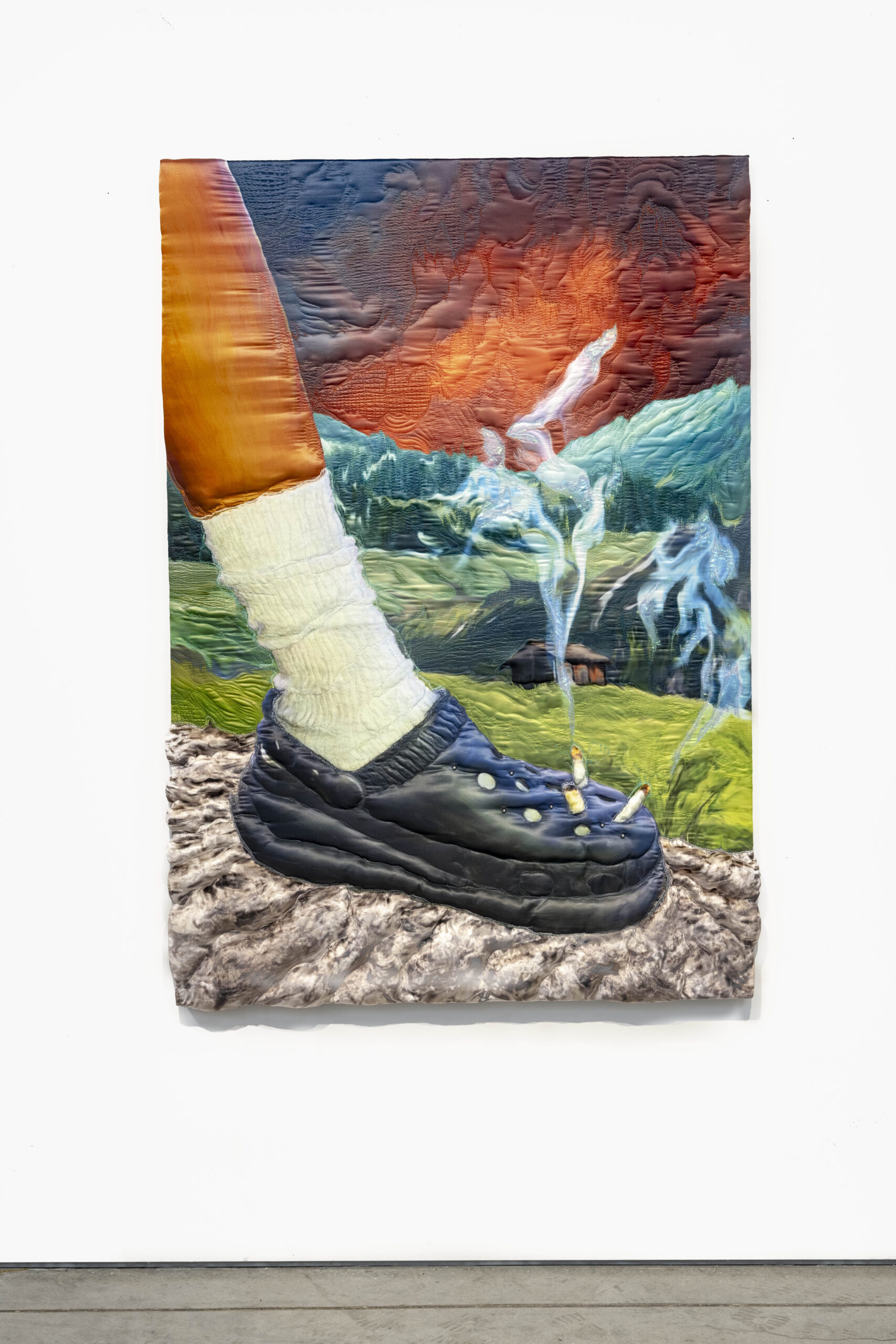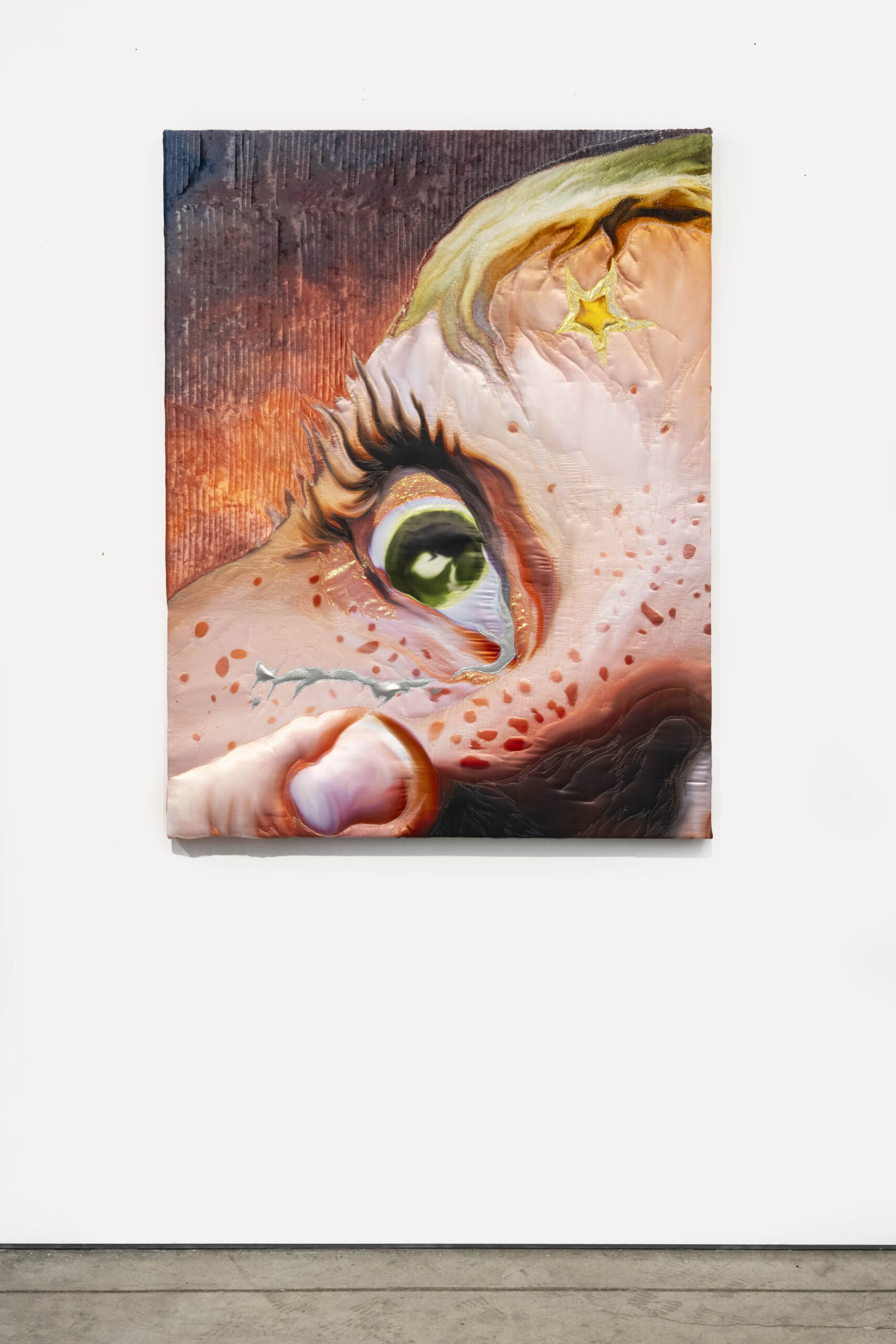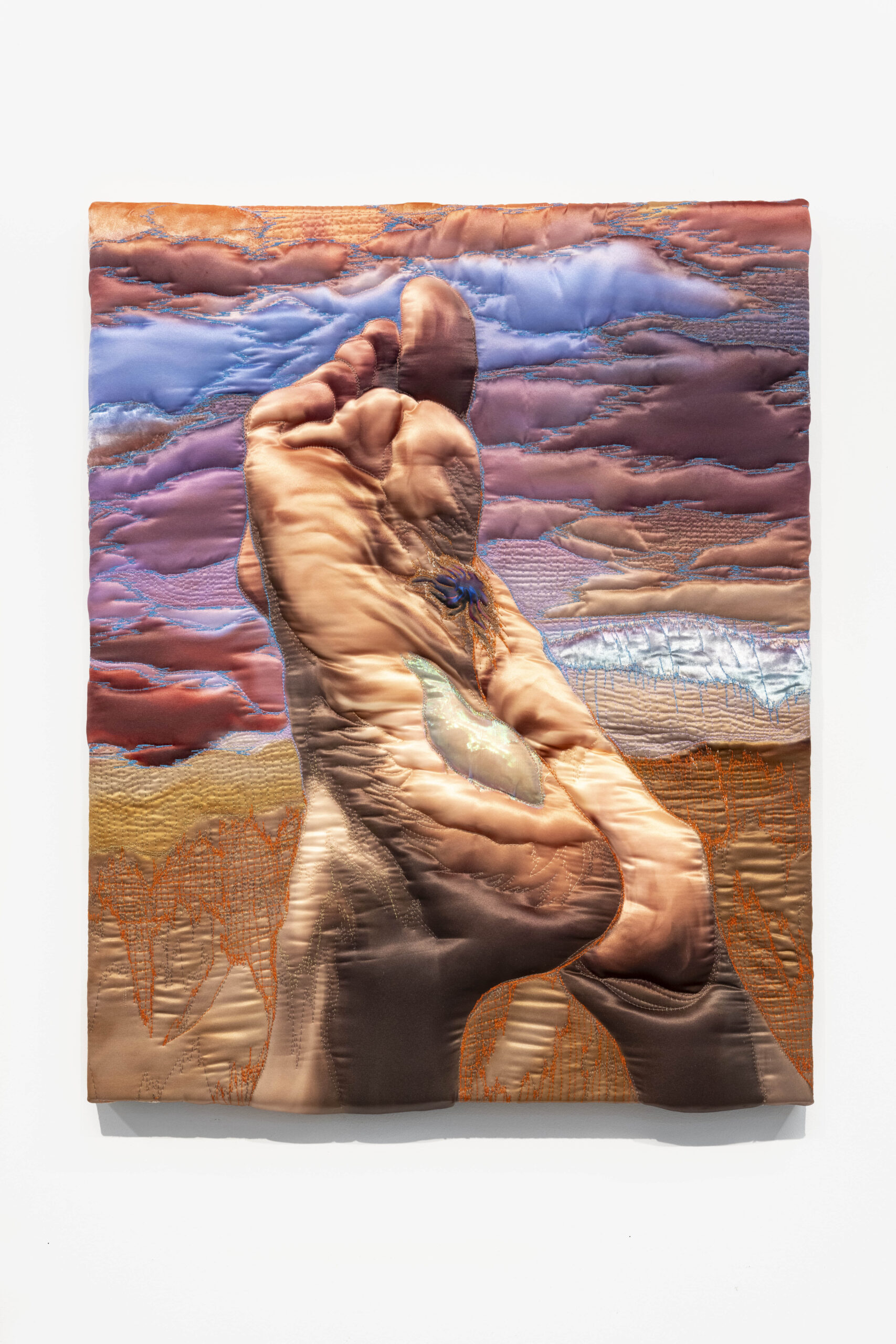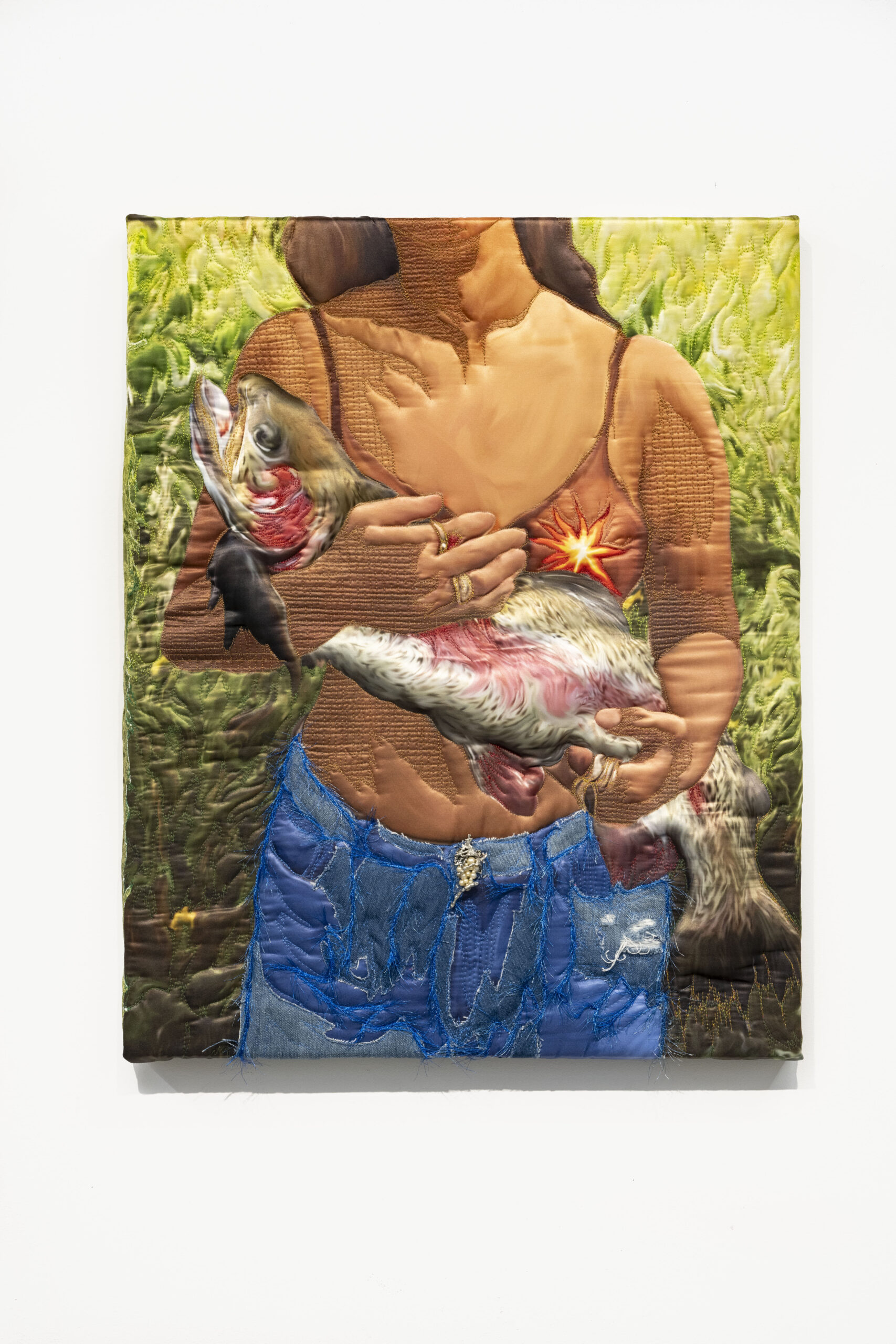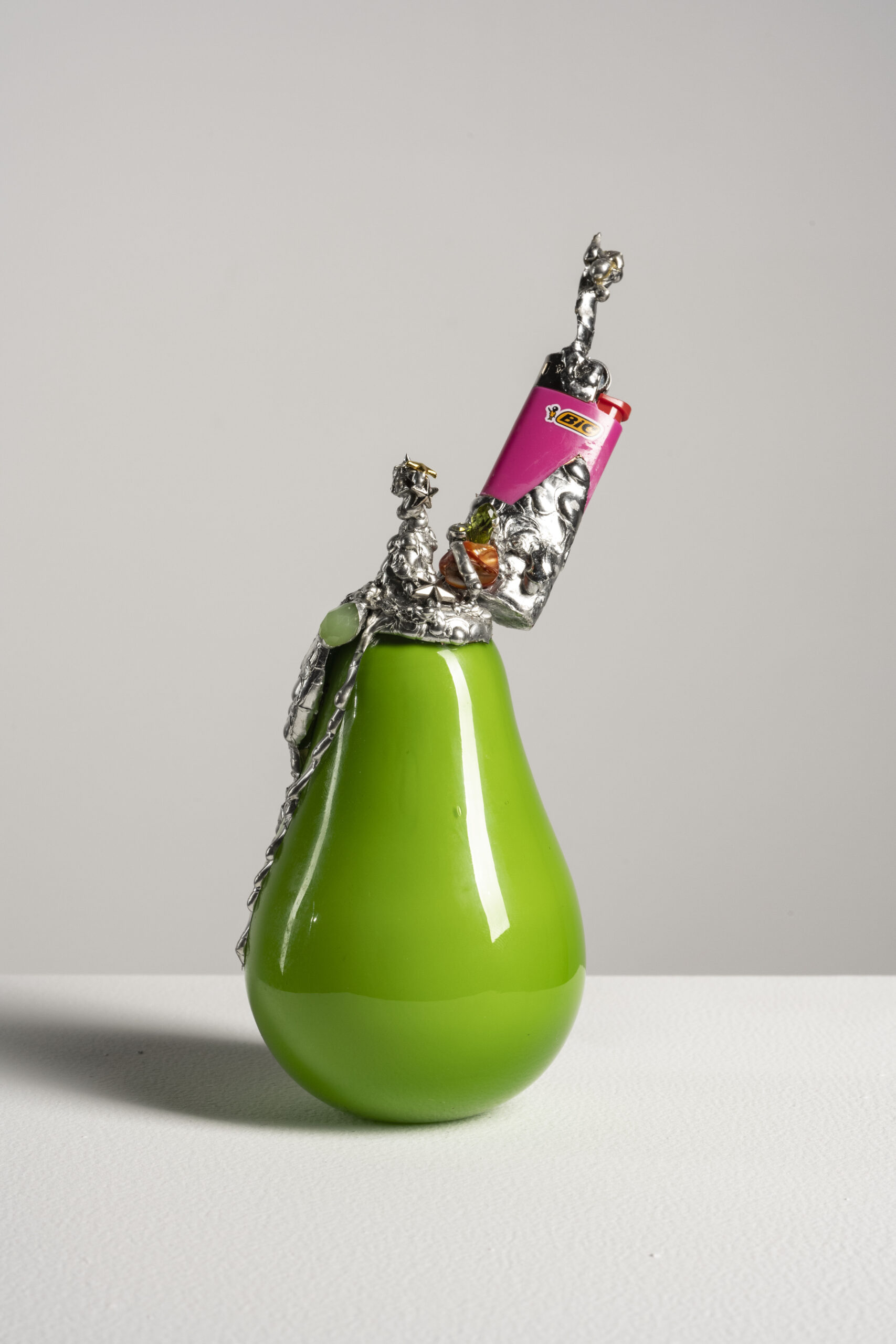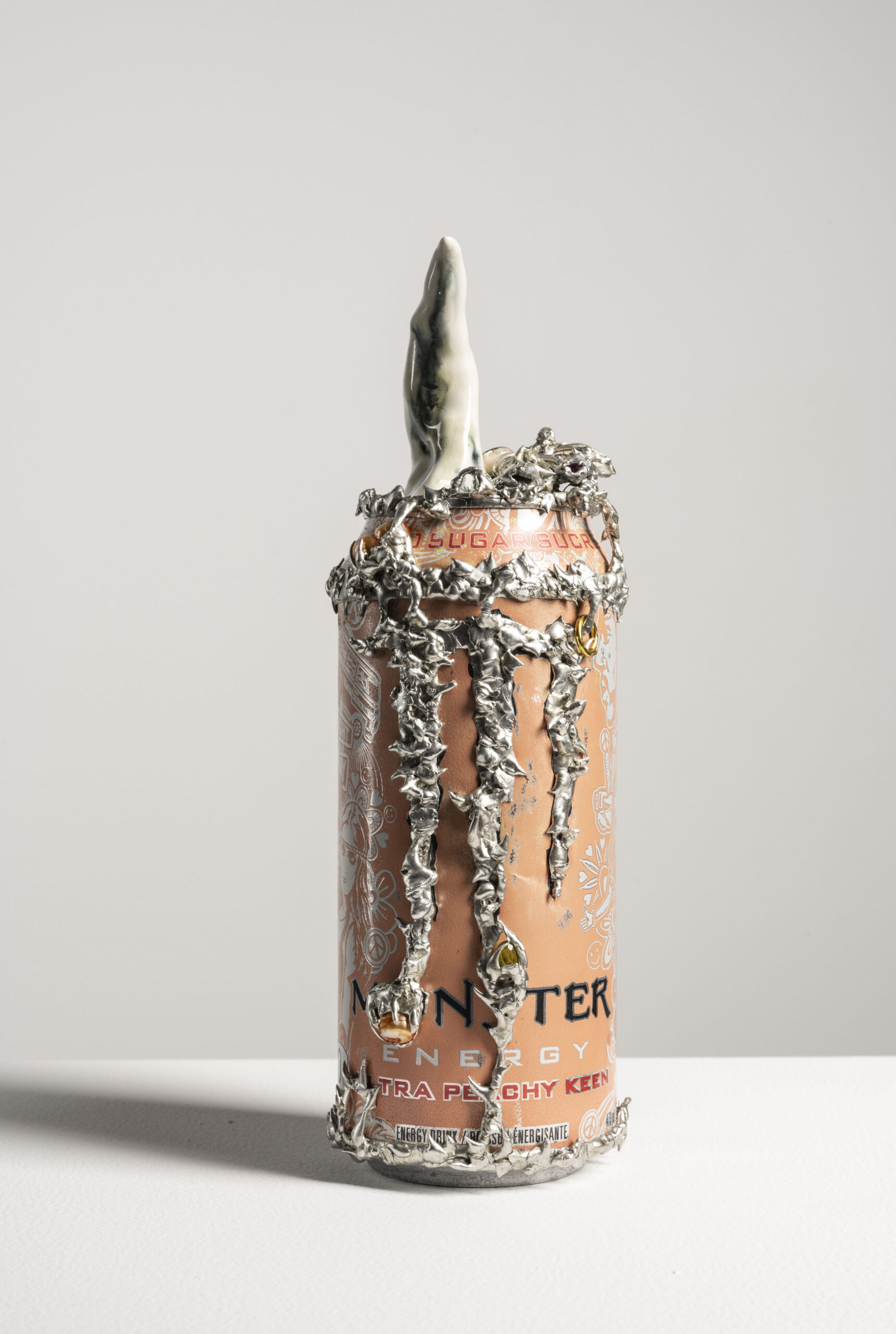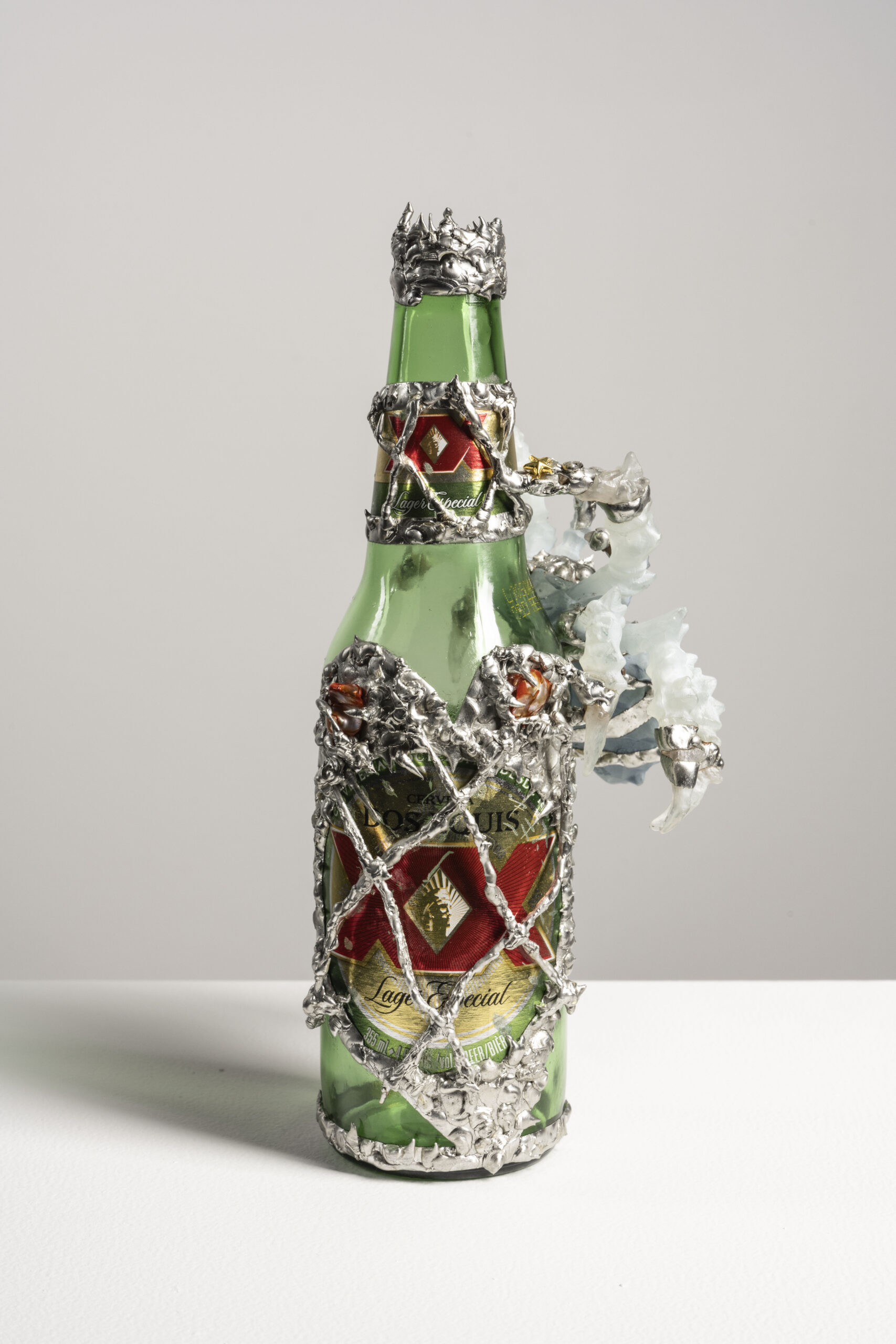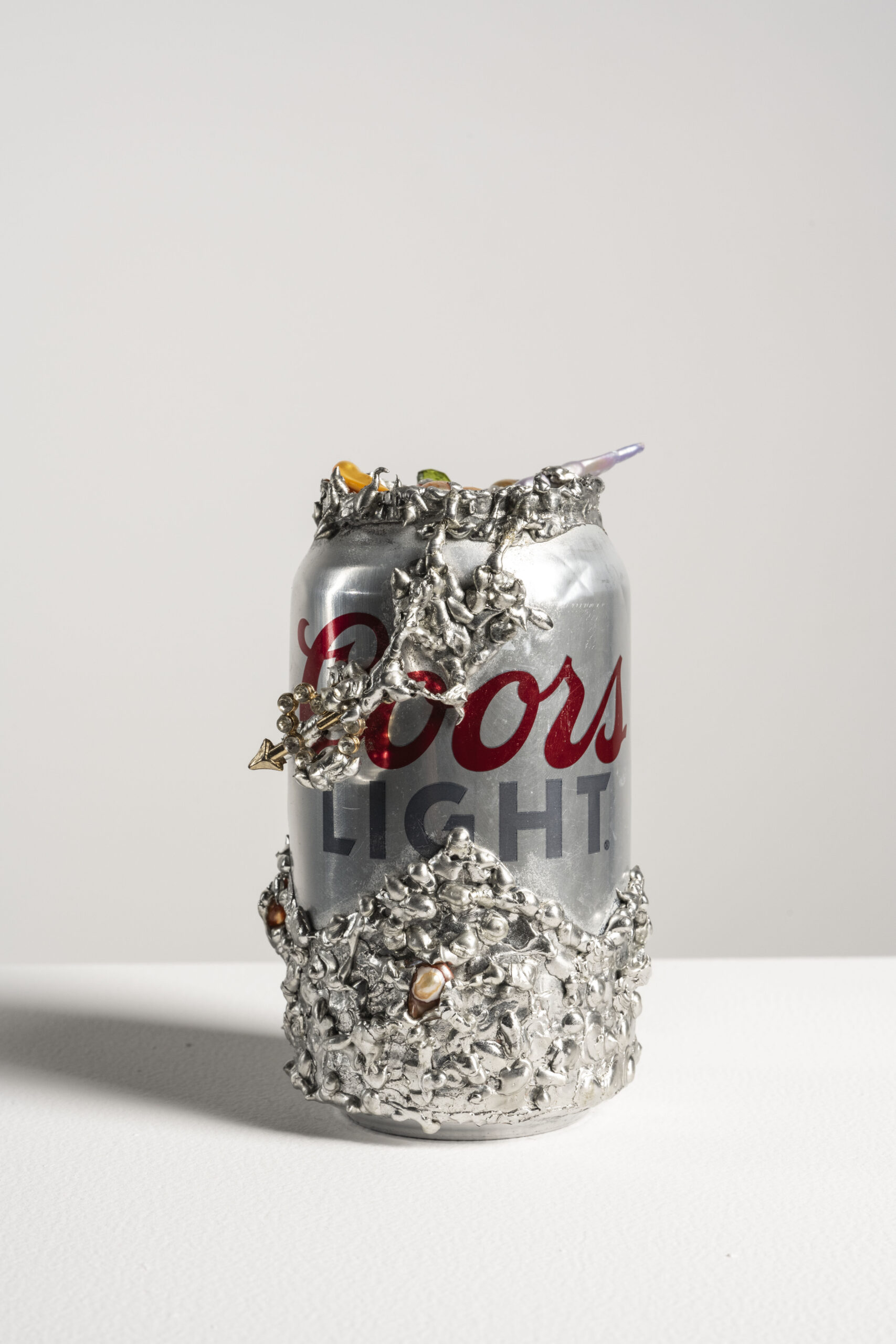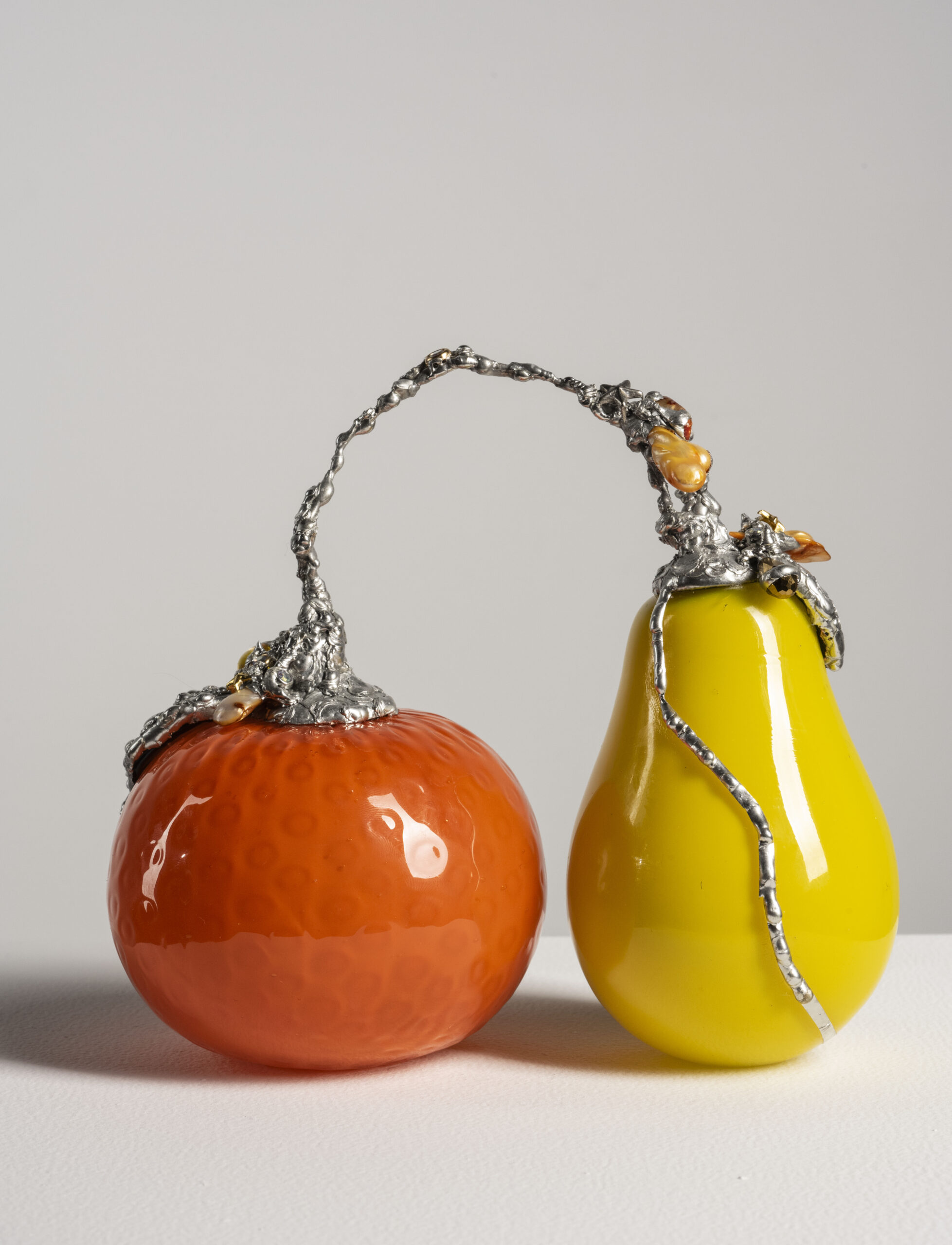Sea, sin & sun
November 9th – December 22nd 2023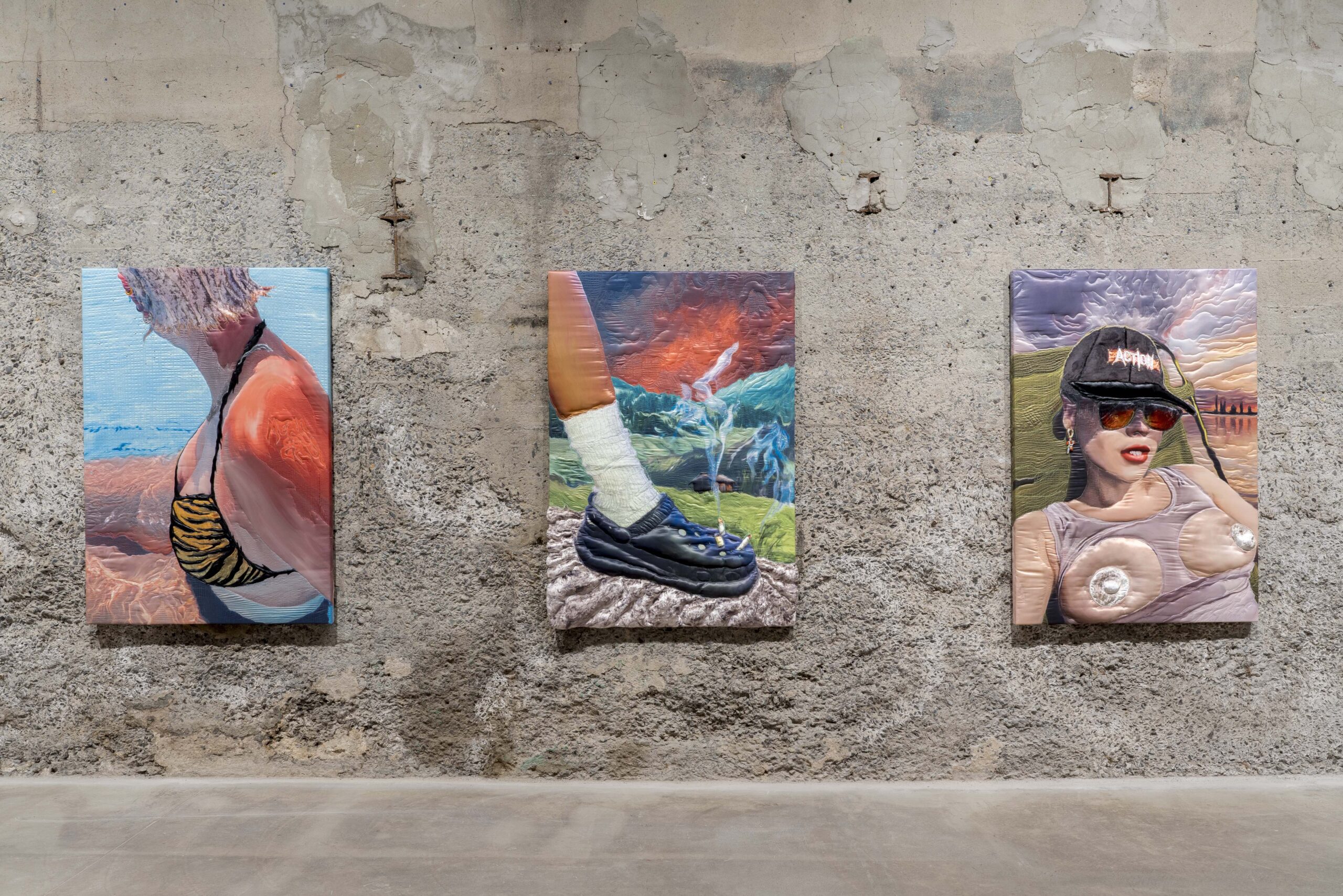
November 9 – December 22, 2023
Bradley Ertaskiran is thrilled to present Sea, Sin & Sun, a solo exhibition by Xénia Lucie Laffely which playfully interrogates digital culture through luscious, vivid textile hybrids that are both seductive and unsettling. Laffely’s new body of work shows snapshots of bodies posing in bizarre but familiar ways, some with delightful queer undertones—a topless beach selfie, long acrylic nails clutching a drink, a barred tongue and peace sign combo, a “Mean Gay” shoulder tattoo—poses and symbols reproduced from the social media lexicon as symbols of status, identity, or vibes. Against the Bunker’s rough cement walls, her vibrant images radiate like a beacon of warm summer light, attractive and amusing at first, but eventually morphing into the uncomfortable itch that comes from being in the sun for too long: the skin burns, a feverish sweat transpires.
Laffely’s artistic process begins by digitally patching together photos from personal and pop culture sources, blending certain elements, with the help of Photoshop’s new AI-enhancement feature no less, into delightfully skewed results. The images are then printed onto a silky fabric and collaged anew with textiles, then accentuated with intricate embroidery, protruding patches, and sometimes metal, chains, or jewels. From the start of its creation, Laffely’s work undergoes an intensive material transformation, from digital image to sculptural textile, that adds richness to the finessed final result. Her practice revitalizes traditional craft techniques into altogether novel means. And yet, despite this laborious multimedia process, the artist’s hand is virtually erased from the final artwork: photos are transformed with digital brushstrokes, and stitches are trimmed and hemmed into a sleek embroidered image. What’s left is a satisfying, immaculate object which simultaneously celebrates and conceals Laffely’s labour, not unlike the commodities that comprise her images.
This polished, refined quality of Laffely’s work recalls a false reality inherent to image consumption. Laffely populates the exhibition with a mix of brands, everyday objects, bodies, and creatures—Crocs, BIC Lighters, a Monster Energy drink, fruit, insects, and oddities—things glorified across mundane social media posts by online personalities, pointing more critically to a cycle of endless vanity, performance, and consumerism. Tension is palpable in the artworks’ content and their execution; her artworks retain the flatness of digital images but her voluminous upholstery spills out of itself, as if the very fabric of Laffely’s world is unravelling before our eyes. Together, the exhibition creates (or replicates) a world that is a little too perfect, too ideal, a glitch in real-time.
